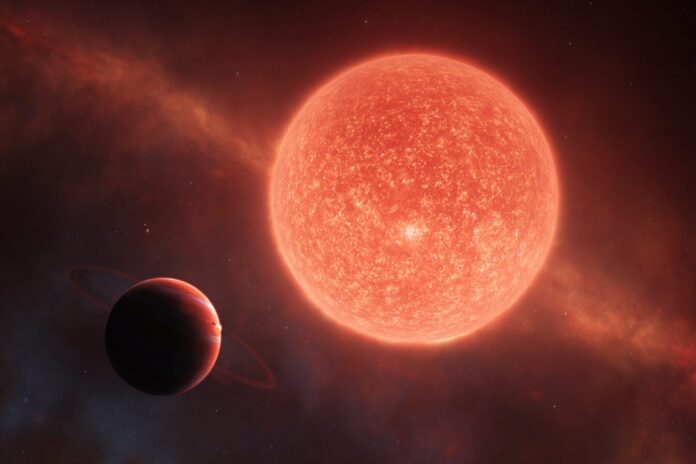Unveiling the Complex Faces of Distant Suns
For centuries, humanity viewed stars as distant points of light, steady and unchanging. However, recent advancements in astronomical instrumentation are challenging this age-old perspective. Thanks to data from NASA’s Transiting Exoplanet Survey Satellite (TESS) and the now-retired Kepler Space Telescope, scientists are revealing fascinating details about the surfaces of stars. Most importantly, they are mapping star spots – cosmic “polka dots” that illuminate a star’s hidden character.
Because these star spots are analogous to sunspots, they signal complex magnetic processes taking place on stellar surfaces. Therefore, mapping them not only provides insights into stars themselves but also enhances our understanding of the environments surrounding exoplanets. In essence, each star’s unique fingerprint, complete with varying brightness and spot distributions, becomes a window into both stellar dynamics and planetary research.
Star Spots and Their Broader Importance
Traditionally, the concept of star spots was derived from observations of our own Sun, where dark patches appear due to intense magnetic activity. Besides that, every other star in the galaxy might present its own configuration of spots that can alter its brightness and affect the signals from transiting exoplanets. Most importantly, these irregularities in a star’s brightness profile require astronomers to re-evaluate transit data more carefully.
Furthermore, understanding these features allows scientists to differentiate whether the observed light curve dips are caused by a true planetary transit or by underlying stellar variability. Because of this, researchers now have to use sophisticated methods to interpret these variations accurately. As explained on NASA Science, this breakthrough is key for more precise exoplanet characterizations and habitability assessments.
How NASA’s Missions Reveal Stellar Secrets
Both TESS and Kepler were primarily designed to hunt for exoplanets by recording slight declines in a star’s brightness during transits. However, because these transits are influenced by stellar imperfections such as spots, early models often assumed a uniformly bright stellar disk. Therefore, irregularities in the light curve provided early clues of a star’s magnetic activity, but they also posed challenges in measurement accuracy.
Most importantly, recent studies using advanced analysis techniques have allowed astronomers to isolate and interpret these disruptions. By applying new algorithms to the observed light curves, such as the innovative StarryStarryProcess, researchers can now accurately map the location, size, and intensity of star spots. This advancement is well-documented in articles like those on Daily Galaxy and Ground News.
Introducing the StarryStarryProcess: A New Frontier in Stellar Mapping
The advent of the StarryStarryProcess model marks a significant leap forward. Developed by Sabina Sagynbayeva and her team, this powerful computational framework harnesses the detailed light curves captured by TESS and Kepler to reconstruct the intricate surface features of stars. Because it can differentiate between dark spots and brighter areas on a star, the model refines our understanding of the energy distributions across stellar surfaces.
Moreover, by determining not only the location but also the relative brightness of each spot, the StarryStarryProcess provides a nuanced picture of underlying magnetic fields. Consequently, this breakthrough model is transforming our ability to perceive stellar behavior, as illustrated in recent reports detailed on Ground News. Transitioning from traditional uniform light models to detailed spot maps is revolutionizing our approach to exoplanet studies.
Implications for Exoplanet Research and Habitability
Beyond just enhancing our view of stars, this innovative mapping technique has profound implications for exoplanet studies. Because star spots interact with the transiting planets by altering the depth and timing of light dips, understanding these features is critical. Therefore, astronomers can more accurately determine an exoplanet’s size, orbital characteristics, and even the properties of its atmosphere, ensuring more robust and precise measurements.
Most importantly, these findings also influence scientific models predicting planetary habitability. For instance, active magnetic regions on stars can trigger flares or bursts of radiation that might affect the potential for life on nearby planets. Because the mapping of star spots provides critical insights into such activity, researchers can better assess whether the radiation environment around exoplanets is conducive to life. As showcased in NASA’s Listen to the Universe video series, every new piece of information helps piece together the puzzle of habitability in distant worlds.
A Glimpse into the Future of Stellar and Exoplanetary Exploration
Looking ahead, the success of the StarryStarryProcess model heralds a new era in the study of stars and exoplanets. Because current missions have demonstrated tremendous potential, future projects such as NASA’s Pandora promise to push these boundaries even further. In addition, enhanced instrumentation and improved analytical techniques are expected to yield even more detailed stellar maps.
Therefore, with the advent of these innovative methods, astronomers are steadily closer to unlocking the mysteries of the cosmos. By integrating data from diverse sources and refining computational models, researchers are paving the way for breakthroughs in our understanding of both stellar dynamics and planetary environments. As highlighted in the YouTube video on Mapping Stellar ‘Polka Dots’, these advances ensure that the search for habitable worlds is based on a more complete and accurate framework.



